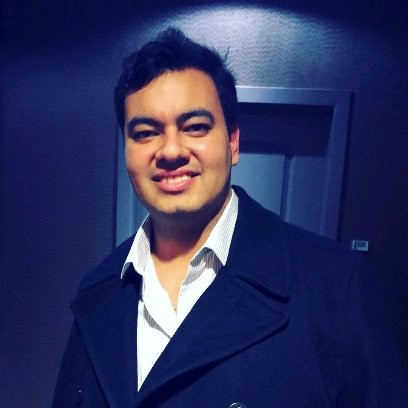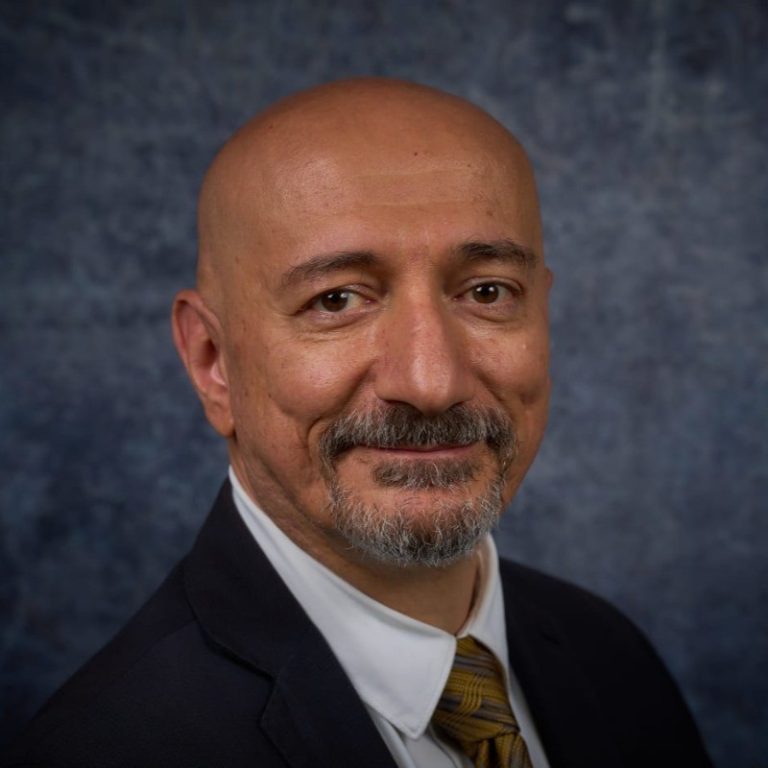Our Keynote Speakers
Redefining artificial lighting through additively manufactured hybrid light sources for well-being
Abstract: Light-emitting diodes (LEDs) have revolutionized artificial lighting, but also exposed the detrimental health effects that stem from insufficient exposure to natural light. Human-centric artificial lighting requires both visual quality and circadian lighting performance that mimics daylight’s evolving spectral power distribution (SPD). Here, we present a color-tunable LED-based light source that achieves SPDs similar to various conditions of daylight and incandescent lighting over the range of visible wavelengths. This light source is comprised of a linear combination of light converter channels containing dyes exhibiting thermally activated delayed fluorescence (TADF) fabricated through additive manufacturing, photoexcited by violet-emitting LEDs (VLED). This hybrid light source establishes a new benchmark for state-of-the-art artificial lighting at approximating daylight, with Illuminating Engineering Society (IES) color gamut index Rg values within 3%, IES color fidelity index Rf values within 7% through CCT values ranging from 4277 K to 22,333 K. We propose efficiency metrics to accurately quantify similarity between light sources and the respective reference daylight spectrum encompassing visual and circadian effects, facilitating WLED benchmarking. The efficiency metrics pertaining to circadian lighting performance remain within 10% over the same CCT range. These results advance lighting science to address simultaneously the grand challenges of health and sustainability.

Oliver Moreno
Senior Scientist at EngeniusMicro, LLC
Bio: Dr. Oliver Moreno specializes in additive manufacturing (AM), radiation detection, packaging, and photonics. His Ph.D. thesis pioneered applying stereolithography (SLA) 3D-printing to light converters for hybrid organic/inorganic solid-state lighting systems that mimic daylight. His thesis also explored SLA printing of low-cost rugged scintillator detectors and light converters for gamma ray detection, particle physics, and nuclear nonproliferation. His current research includes AM of high-efficiency, low-cost rugged gamma radiation detectors, and AM of chip packaging and PCBs for high temperature and radiation environments.

Cristiano Tomassoni
Bio: Dr. Cristiano Tomassoni received his Ph.D. in Electronics Engineering from the University of Perugia, Perugia, Italy, in 1999. In the same year, he joined the Lehrstuhl für Hochfrequenztechnik, Technical University of Munich, Munich, Germany as a Visiting Scientist, where he worked on the modeling of waveguide structures and devices using the generalized scattering matrix technique. In 2001, he was a Guest Professor at the Fakultät für Elektrotechnik und Informationstechnik, Otto-von-Guericke University, Magdeburg, Germany. In the early stages of his career, he contributed to the enhancement of several analytical and numerical methods for electromagnetic component simulation, including the finite-element method, mode-matching technique, generalized multipole technique, method of moments, transmission-line matrix, and mode matching applied to spherical waves. In 2001, he joined the University of Perugia, where he is currently an Associate Professor and teaches the ‘Electromagnetic Fields’ course and the ‘Advanced Design of Microwave and RF Systems’ course. His main research interests include modeling and designing of waveguide components and antennas, miniaturized filters, reconfigurable filters, dielectric filters, and substrate integrated waveguide filters. He is currently studying the use of Additive Manufacturing (AM) technology for the fabrication of microwave components, considering various technologies such as Stereolithography (SLA), Lithography-based Ceramic Manufacturing (LCM), Selective Laser Melting (SLM), Fused Deposition Modeling (FDM), and PolyJet technology. Prof. Tomassoni is the Vice-Chair of the MTT TC-5 Filters Technical Committee of the IEEE MTT society. He also served as an Associate Editor for IEEE Transactions on Microwave Theory and Techniques from 2018 to 2022. Prof. Tomassoni is the recipient of the 2012 Microwave Prize presented by the IEEE Microwave Theory and Technology Society.
Additive Manufacturing: Emerging Opportunities for Microwave Components
Abstarct: The Additive Manufacturing (AM) technology, also known as 3D-printing technology, offers several interesting and attractive features, including fast prototyping, geometry flexibility, easily customizable products, and low cost (in some cases). However, using such technologies for microwave devices is not straightforward as AM has not been specifically developed for microwave devices, and in most cases, some adaptation and post-processing is necessary. Furthermore, there are many AM technologies available, and it is important to understand their characteristics before selecting one.
In the presentation, an overview of the different AM technologies available will be provided. Additionally, an analysis of some of the most common AM technologies used for the manufacturing of microwave components will be conducted in more detail, with the help of several examples. Several microwave components manufactured with some of the most popular AM technologies will be shown, along with a detailed description of the manufacturing process, post-processing, and all actions necessary to make the component perform well. Furthermore, it will be shown how the flexibility of this technology allows the development of new classes of components with non-conventional geometries that can be exploited to obtain high-performing components in terms of compactness, weight, losses, etc.
Additive Manufacturing – Printing the Future
Abstract: Additive manufacturing (AM), also known as 3D printing, is growing increasingly capable of doing more than just producing prototypes. Many now believe that AM, after years of development, is on the cusp of a commercial breakthrough. As McKinsey said in a March 2022 report: “After decades as a bit player, additive manufacturing is on the cusp of stardom. Faster machines, better materials, and smarter software are helping to make AM a realistic solution for many real-world production applications.” In this talk Professor Kurfess will discuss the current and future status of AM and present some thoughts as to how we implement AM in the most effective and efficient manner.

Thomas R. Kurfess
Senior Scientist at EngeniusMicro, LLC
Bio: Dr. Thomas R. Kurfess is the Chief Manufacturing Officer of the Georgia Institute of Technology, and the Executive Director of the Georgia Tech Manufacturing Institute. At Georgia Tech he is the HUSCO/Ramirez Distinguished Chair in Fluid Power and Motion Control and Regents’ Professor of Mechanical Engineering at Georgia Tech. He also serves as the Chief Technology Officer at the National Center for Manufacturing Sciences. During 2019-2021 he served as the Chief Manufacturing Officer, and the Founding Director for the Manufacturing Science Division at Oak Ridge National Laboratory. During 2012-2013 served as the Assistant Director for Advanced Manufacturing at the Office of Science and Technology Policy in the Executive Office of the President of the United States of America, where he was responsible for coordinating Federal advanced manufacturing R&D. He served as the President of the American Society of Mechanical Engineers in 2023-2024 and was President of the Society of Manufacturing Engineers in 2018. He currently serves on two federal advisory committees, the Department of the Navy Science and Technology Board, and the Department of Energy / National Nuclear Security Administration Advisory Committee on Nuclear Security. His research focuses on the design and development of advanced manufacturing systems targeting secure digital manufacturing, additive and subtractive processes, and large-scale production enterprises. He is an elected member of the National Academy of Engineering and is a Fellow of ASME, AAAS, and SME.